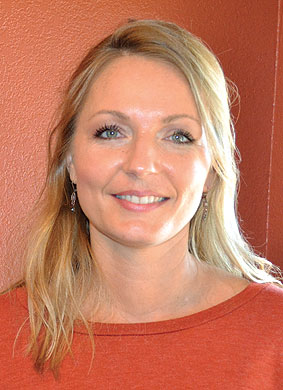
Tim Bartkoski has learned a lot. He had some sheep when he was younger, and years later when his daughters wanted animals to show in 4-H, he knew from experience how much easier sheep are to care for and show than a larger animal, so he got back into the sheep business. That was 30 years ago.
Tim worked at Dairiconcepts, a food dehydration plant in El Dorado Springs, Mo., for 28 years. Over the years he did just about everything from being a janitor to general production to team leader. When he retired a little over 2 years ago, he sold all his sheep, and he and his wife Linda fulfilled a lifelong dream to drive to Alaska. They were on the road for 34 days. When they got back, Tim found their empty pastures overgrown. After he spent the next month mowing and cleaning fence lines he went to an auction at Diamond, Mo., and bought some hair sheep to do the job for him.
That initial investment in hair sheep has grown exponentially. Last year, he had a 200 percent lamb crop. He has Katahdin ewes that he breeds with a Dorper buck. He likes using a Dorper buck for the carcass traits they carry. Tim’s lambs often bring a premium because consumers like the animals he produces.
Though Tim raised Registered Hampshires when his daughters were showing, he prefers Katahdin sheep because even after an excellent lamb crop in the spring, most are able to be bred back in the fall as well. Tim said, “The lambs hit the ground running,” they don’t require heat lamps or lambing jugs and often the lamb is up and nursing within 10 minutes of birth. He also said, “They get fat on common pasture and rough grazing ground.” He gives them very little feed, and the animals favor grazing rather than eating from the creep feeders anyway. He has found the best prices at market when he sells lambs at 70 pounds or so, a weight his lambs reach at around 90 days. He admits that some meat breeds will put on more weight faster, but when you consider the feed intake difference, and the fact that Katahdin ewes often produce double the lamb crop of other meat breeds, he is proud of his flock’s performance.
One benefit is that sheep are not as difficult to keep in fences as goats are. Most of Tim’s fences are barbed wire, but the wires are placed closer together than they would be for a cattle fence. As easy keeping as his sheep are, one of the biggest things Tim has to worry about with his flock is predators.
Tim says that a coyote will occasionally kill a lamb if it is hungry enough, but stray dogs can do much more damage. To protect his current flock of 35 ewes and 65-70 lambs, he has a pair of Great Pyrenees and a donkey. He also has chickens and guineas. Though the poultry might not seem like guard animals, they protect sheep in their own way. They eat ticks and fleas that bother the dogs, and a coyote is much more likely to grab a chicken for a quick meal than a lamb. Using poultry as protection is a trick he learned from an older farmer.
Showing sheep gave his daughters many great experiences and good friends. The whole family enjoyed trips to shows and enjoyed it even more when they won. Even though Tim has owned sheep a large part of his life, he is still learning things, but the things he already knows make his sheep herd successful.







